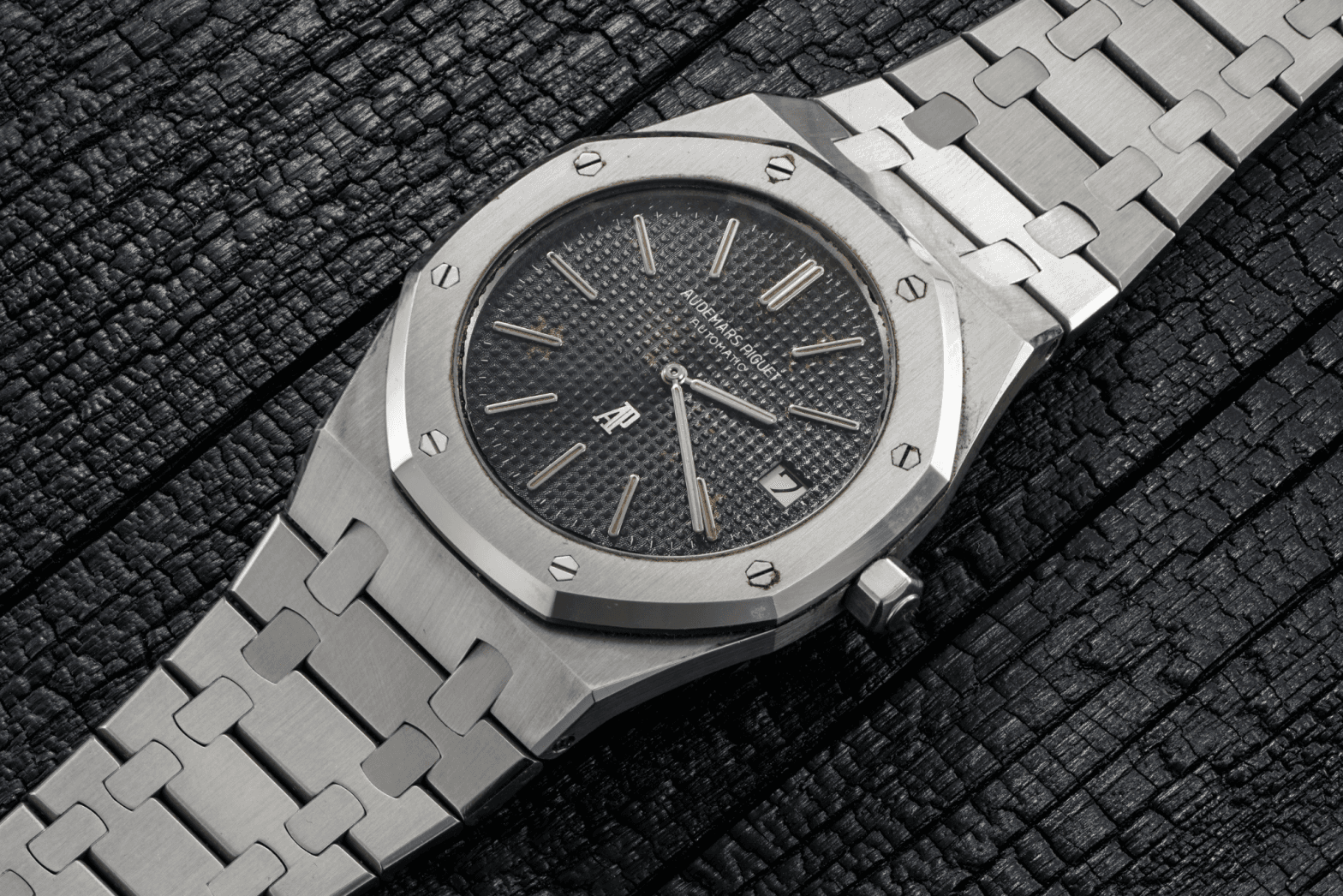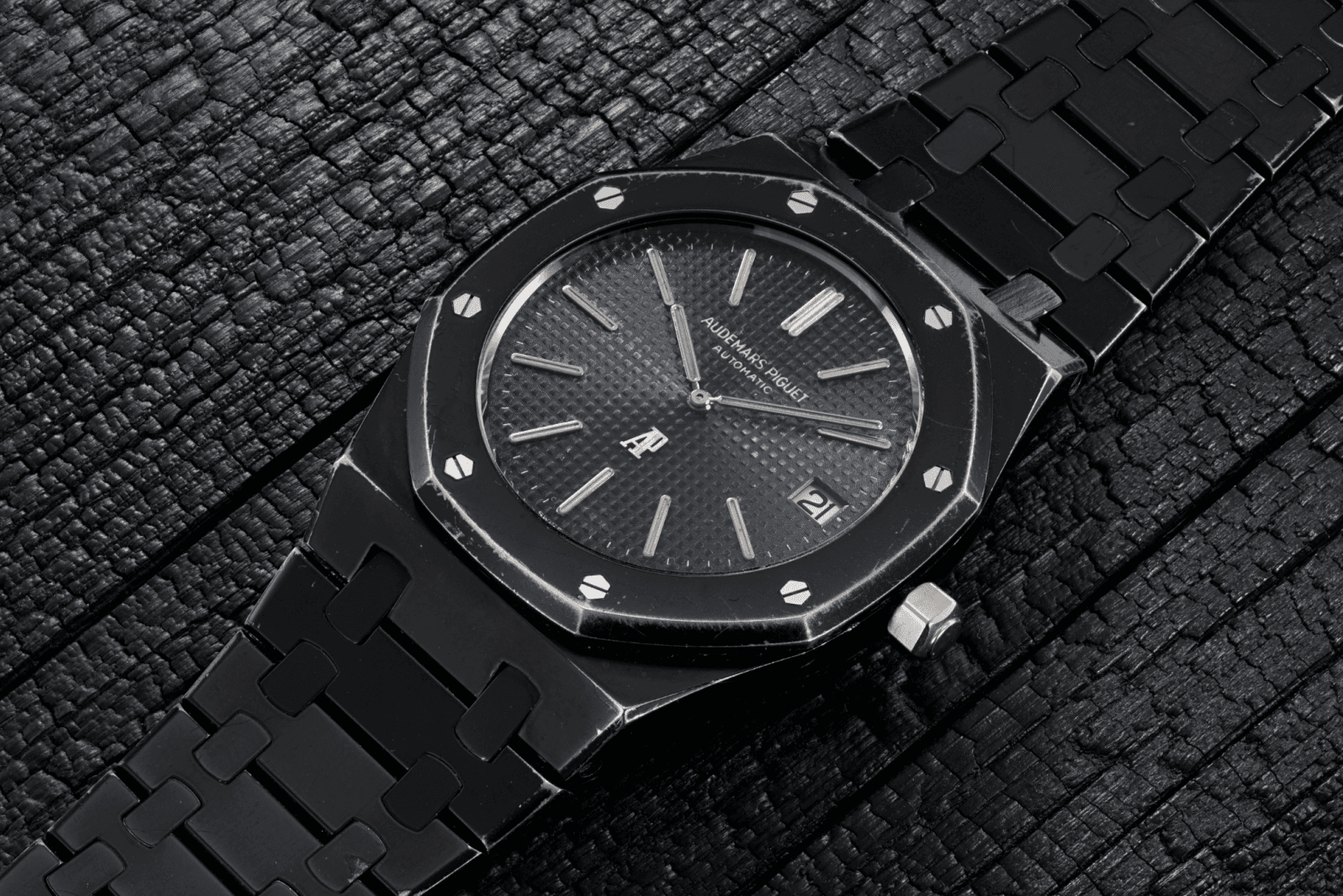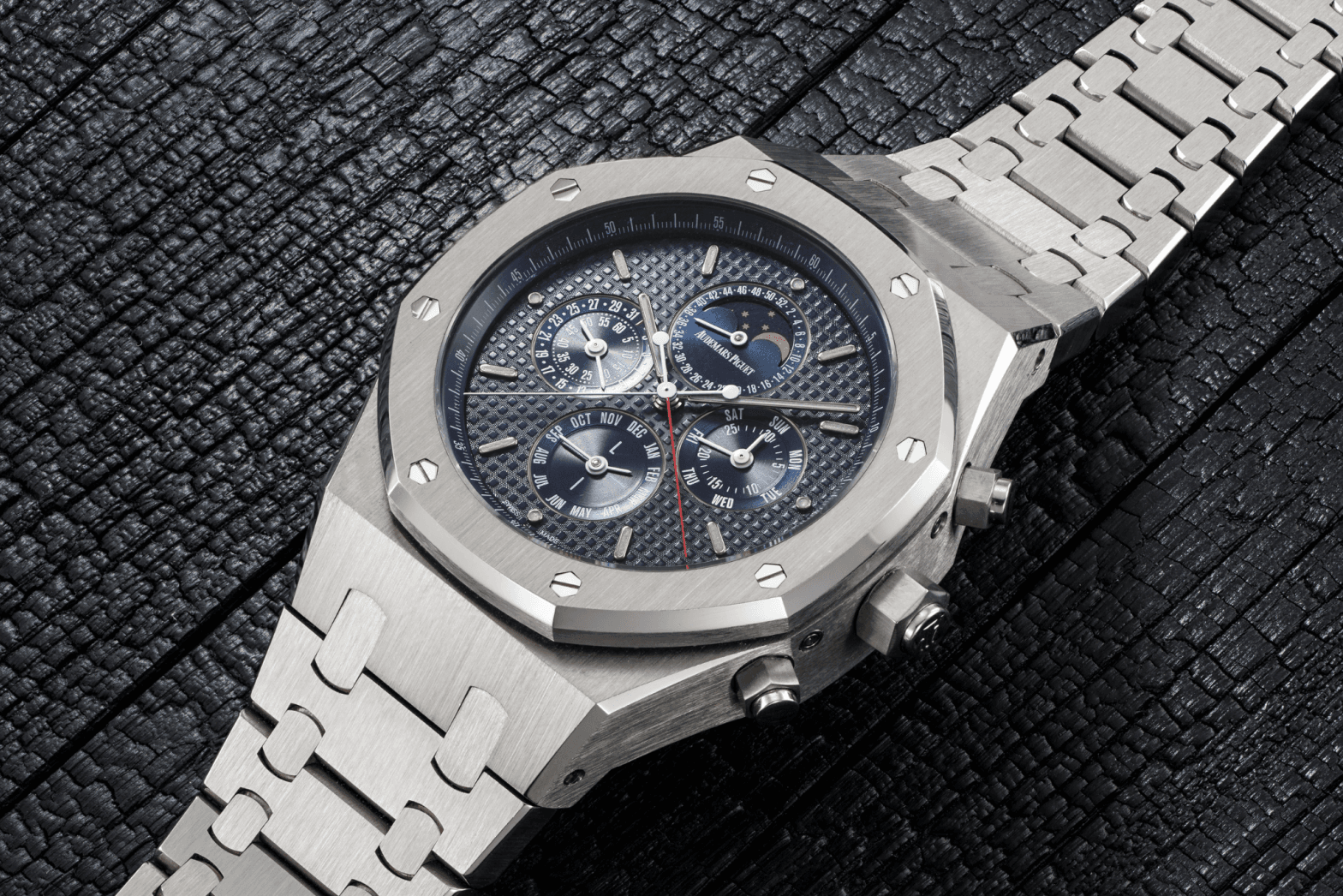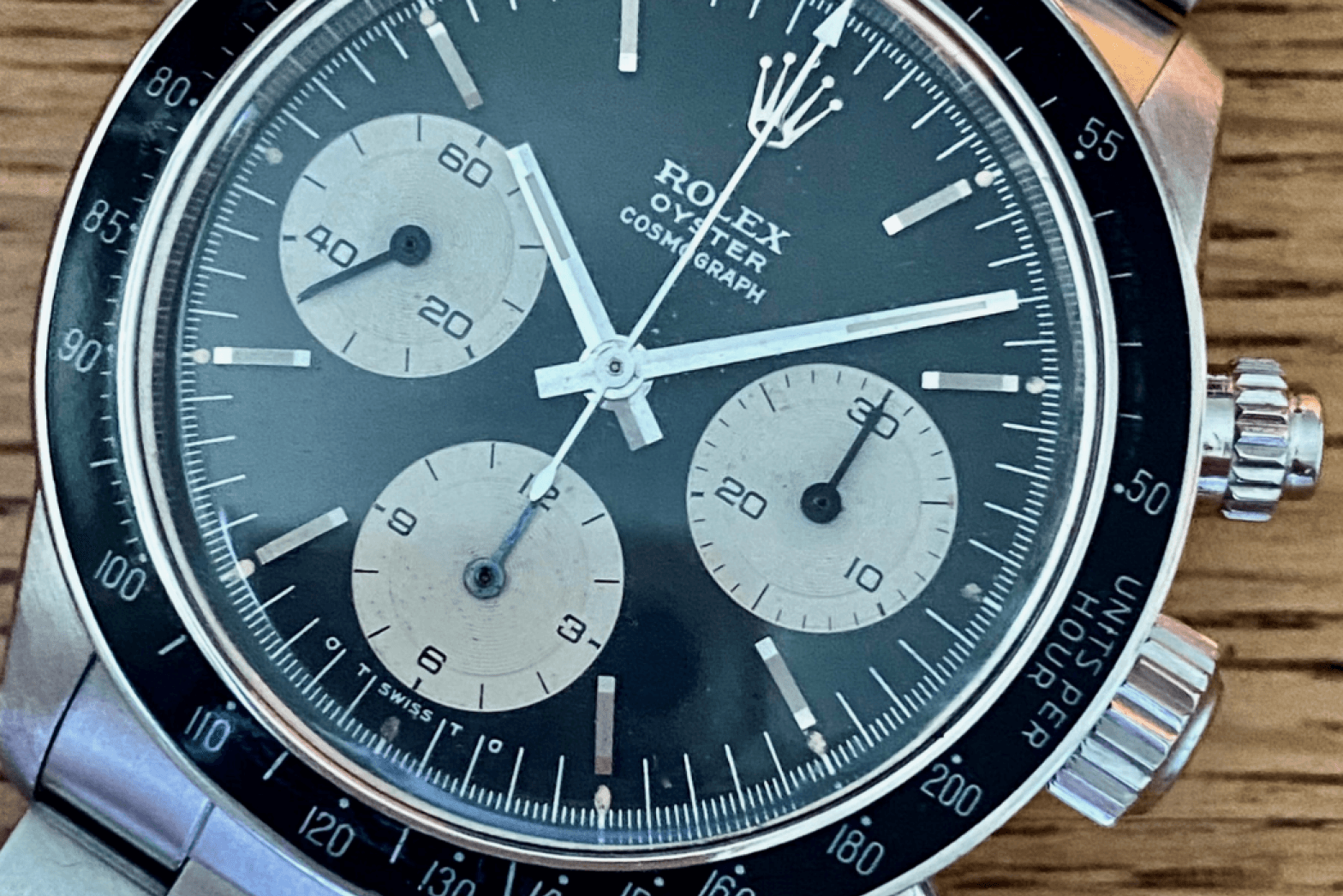
In the run up to the most awaited auction this year, Bacs talks about curating a special collection of 88 Royal Oaks for Phillips’ ‘The Royal Oak 50th’, the most precious watches in his collection, his inimitable partnership with Livia Russo and more
In the world of vintage watches, Aurel Bacs is the ultimate hero – one who needs no introduction. Intrigued by wristwatches since childhood, he joined Sotheby’s as a specialist in the late 1990s and worked up the ranks to become a star auctioneer. Over the last 25 years, Bacs has been wielding the hammer at the most significant auctions across the globe, breaking one record after the other.
Each auction season, all eyes are glued to what Bacs would sell, especially since the historic auction in 2017 when he sold the most expensive wristwatch in the world – a 1968 Rolex Daytona worn by none other than actor Paul Newman himself.
All set to host one of the most awaited auctions this year, Bacs spoke to Wristcheck about curating an extraordinary selection of 88 Royal Oaks for ‘The Royal Oak 50th’, the most precious watches in his collection, his inimitable partnership with Livia Russo and more.

You have curated some of the most important watch auctions in the world. What does it take to put together a historic sale like ‘The Royal Oak 50th’?
I think many people in the industry underestimate the complexities of such an endeavour. There is often an assumption that we go out like fishermen, cast our nets wide and see what sticks. If we were to do that, you would either have too much or just not enough for an auction of this stature. It won’t be a good mix or a good balance and the high quality that we demand from ourselves. So you cannot just go and catch what you can, the process is much more structured.
First, the team sits together to discuss what we are really aiming for – it is a bit like making a shopping list. How many complicated pieces, what colour, historically significant watches of the highest quality and more. So yes, it is not like a fishing expedition where you get 500 kilos of sea bass for one evening. You need an interesting mix.
Finding the desired watch doesn't mean the task is done. We have to then check the watch with the brand’s archives. For this auction, we have checked every single Royal Oak with Audemars Piguet’s archives. This sometimes leads to a frustrating reply from the brand when they say it does not match their archives. We have to then replace that watch with the one that we actually wanted. So it is a work in progress until the absolute last day. And then again, just finding the watch doesn't necessarily mean that it's mission accomplished. You also need to find it at the correct auction estimate. The financial aspect needs to be synchronized with the overall concept. All this has to be accomplished in a matter of very, very few weeks. We hope and pray that at the end, the sale presents a good balance, quality, variety, volume and value.
So how many watches are we going to see at ‘The Royal Oak 50th’?
You're the first person to get a confirmed number from me – there will be 88 Royal Oaks. Now, I would like to make sure that no one thinks that we've gone as far as to have this number by plan. It is a very beautiful number but it was not our target. The target, at one point, was to have 72 watches to go with 1972 – the year Royal Oak was launched. Then someone from Japan presented this wonderful, unique piece that had to be added to the collection. Last week, at one point, we were at 82 and then the number went up to 90. We had to drop a couple of them because they weren’t cleared by Audemars Piguet’s archives. Finally, we closed it at 88. Needless to say, some people were ecstatic that it was 88, given that the Royal Oak is an octagon. So having 88 lots for a watch that has an octagon case is probably destiny and we just leave it at that.

The first highlights that have come through present eight historically significant Royal Oaks. Which ones are you expecting to break records?
We haven't released more highlights yet. That will happen very soon on social media and then, of course, in the coming weeks, we will release the entire catalog. So at this point, we don’t have a massive feedback from the entire global watch community.
I must say, I was absolutely pleased to see the incredible feedback we received when we announced that we had discovered – some sort of a T Rex in the backyard – the number two of Ref. 5402 in the vault of the original owner in Europe. This is the earliest known surviving Royal Oak ever made. According to Audemars Piguet’s records, there's only number one of this ref that exists but no one knows where it is.
I also believe this number two is the only one from that very early generation that has never been worn in its 50 years of life. The watch was a gift to the current owner who chose not to wear it and it has survived in, what I would call, a ‘Sleeping Beauty' condition. To find that time capsule – the historic archetype of the Royal Oak – in its completely original condition is a sensation and the market has welcomed this news with a standing ovation.


Another interesting discovery for the upcoming auction has been Karl Lagerfield’s Ref. 5402. How did you confirm it was actually Lagerfield’s watch?
That's a very good question and I'd like to be very clear and truthful about it. There is no bulletproof manner to prove that this watch belonged to Lagerfield and we have mentioned the same in our press release as well. The current owner has had this watch for many, many years – since the time the Royal Oaks were not as hot and cherished and respected as they are today – and he was told this was one of Karl Lagerfeld’s watches. Now, this is hearsay. There's absolutely no proof yet. Audemars Piguet was very happy to see this watch for two reasons. First, it was sold in Italy, which is a wonderful match if you know that Karl Lagerfeld was the creative director of Fendi based in Rome in the early 70s. I would have had serious doubts if the watch was originally sold in Sweden or Mexico. The watch also a black coating that is far from the quality and technical structure that is available today. The amount of wear and tear on the watch shows this wasn't done last week or last month, it is consistent with something that has had decades of wear.
There are also of course pictures of Karl Lagerfeld wearing black 5402s, and we know that he has had more than one of those. He not only had several Royal Oaks but he also gifted many to his trusted friends and loved ones. So with the absolute best intention, we can say that this was his watch. Maybe one day we will find a little receipt in his estate, but I doubt it. However, until then we have these overwhelming hints to believe this was Karl Lagerfield’s watch.

What are the other highlights of the auction?
I think the word ‘highlights’ is very personal. To the lovers of complex movements, I'm sure the grand complication – the most complicated Royal Oak variant ever made – would be a highlight. To others, the rarest, in terms of the one that was made in the smallest numbers would be a highlight. There are some Royal Oaks, so rare that even Audemars Piguet said, “Good heavens, we looked into our archives, we had only made two of those”. So rarity could be a parameter that speaks to some people.
Then, let's not forget, AP also embellished Royal Oaks, sometimes with dozens and dozens of wonderful sparkling diamonds or other stones. So someone with a weakness for precious stones will find those to be the highlights. Then we have watches with intriguing stories, timepieces that belonged to celebrities and marked an important moment in their lives. For example, we have a Royal Oak that could be the highlight for petrolheads or Formula One aficionados – a unique watch that Jean Todt, the former FIA president gifted to his good friend Luca di Montezemolo, the director of the Ferrari Formula One team, when they won the seventh world championship with Michael Schumacher at the wheel. This watch has a unique history and can never be replaced by another similar or identical looking watch. So I believe there's too many parameters that can be identified as the highlights.
Do you think the definition of ‘grail watches’ is changing with more and more younger collectors participating in auctions?
Absolutely! And this is not reserved to the watch market alone, I think as human beings we evolve with everything we do. If you asked someone in 1955, who is the most iconic musician, the answer would have been Elvis Presley. 10 years later, it would have been John Lennon and 20 years later, Michael Jackson. Today, it could be Ed Sheeran or Katy Perry. Every generation has their own taste, and culture evolves.
However, the Royal Oak and other icons like the Rolex Daytona, the Submariner and Patek Philippe Nautilus have passed the test of time. They have become landmarks of watchmaking and I really believe that like The Acropolis in Athens, some things survive eternity. The Royal Oak has gone through its ups and downs through different periods. It was launched during the Quartz crisis and has faced fierce challenges from so many different models, brands and trends. It is still here in the most fascinating moment of the wristwatch market ever. I think it's a watch that appeals as much to an 80-year-old gentleman, as it does to a 20-year-old graduate.
I believe watch expertise runs in your family. What was the most important lesson you learned from your father?
My father was my first mentor, he encouraged me to discover different watch markets. However, it was never more than a hobby for him. I think I imbibed the passion and curiosity to always “look underneath the stone” from him. And then, throughout my career, I had several bosses and mentors, who taught me different aspects of the trade. My first boss, Daryn Schnipper, taught me how to work hard. My second boss, Simone De Pury taught me how to think out of the box and be creative. My third boss François Curiel taught me how to do things better and be a perfectionist. My next boss, Ed Dolman, the chairman at Philips, taught me how to be a leader and innovator.
I have also been with leaders and mentors, outside of my workplace, notably Jean-Claude Biver. Needless to say, had it not been for my father, who took me out every Saturday to unearth vintage rarities at pawn brokers, that spark wouldn't have lit the candle and I wouldn't be talking to you today.
Which have been your most precious acquisitions so far?
I think my most precious watches are the ones that have been gifted to me on special occasions. The first one was an IWC, which I received from my family when my job got confirmed. In 2013, after 10 years at Christie's, we organized the Daytona auction and by then my wife and I had already tendered our resignations to do something new. She bought me a Daytona in steel with an inscription that says ‘For every door that closes, a new gate will open.’ When she gave me this watch, we didn’t know what to do next. We didn’t know Phillips was waiting for us 12 months later. I have worn this watch during the most important moments in my life, it was on my wrist even at the Paul Newman auction in New York. So the most precious watches are those that have special memories – they are symbols of friendship, respect, appreciation and love. These are the ones that I cherish the most.

You almost gave up working with auction houses right after your first job. So what made you continue thereafter and eventually be the ultimate auctioneer in the watch world.
My wife and I have been working together since 1998 and we have chosen to leave the auction industry thrice since then. If you love vintage watches and the thrill of an auction as much as we do, mixed with a little bit of competitiveness, it can be one of the most intense jobs ever. Once you resign and go into a new direction, which is much calmer, you start missing the action within six months of leaving the space. And then someone comes up with a promising offer and you say : ‘Wow, that sounds really good. We miss it’ and you're back into the whirlwind!

What makes you and your wife, Livia, an invincible team?
‘Invincible’ is a very strong term. You should see our daily lives. Livia and I are like night and day, in terms of our personalities. She's very analytical, disciplined, and has an excellent memory. I'm more outgoing, creative and daring. We challenge each other. Thankfully, there is no hierarchy between us. There are no taboos and we don't have to think twice before sharing our opinions with each other. We know each other's weaknesses and strengths. So if a task is being given to us, we know exactly who would be better and quicker in resolving it and handling it in the most professional manner. So it's really like the left and right hand working in tandem. Our partnership has worked quite well, I must say. We have been together for 23 years now and that obviously makes many things easier.
Ever since you joined Phillips, has there been any sale where you haven’t broken a record? Is it something that comes naturally to you now?
I hadn’t actually registered this until recently. So yes, we have broken records in every single sale so far. I believe there are a number of things that have helped in achieving this – there is no other auction house in the world that curates sales of only the most superior quality of watches, so you already have the very best on offer; secondly, we are very fortunate that the market for independent brands has grown at an unexpected pace over the last few years.
When I started my career, watches were of interest to a small group of nerds, today it’s a worldwide community. There is also more money out there than there has ever been in the history of mankind. So it is not just about Aurel Bacs or Phillips or the watch market. I have witnessed several political and economical crisis in my career – right from the 9/11 attacks that happened just before Phillips’s inaugural auction to the collapse of Lehman Brothers, the Covid-19 pandemic and now the war in Ukraine. Whenever there is a global crisis, the World Banks often use this one tool to stop bleeding– lower the interest rates and print more money. If you print more money and the supply of valuables like watches, arts or real estate is low, there is a shift in equilibrium. The value of rare, desirable assets starts shooting up. So, we have seen the same in the watch market as well over the last 10-15 years.
What kind of challenge are you waiting for next?
I have never made a five or ten year plan in my life. For the last 25 years, I have been waking up really early in the morning and I’m always excited to go back to work to discover what a new day would bring along . At any given moment, one may receive a call or an email from someone saying “I've just inherited a rare watch from my uncle. Can I send you a picture?” and you find the rarest missing piece that the community has been looking for years and decades. So, our job is full of surprises. Sometimes, I jokingly say that my profession is like Indiana Jones. I just have to follow a lead and go forward without knowing where I’m going next in search of that Holy Grail.
I feel very fortunate that I still love my job as much as I did on the first day of my career. I think the worst day in my life will be the one when I wake up and I will no longer be interested in watches. However, if I haven't lost the appetite in the last 25 years, I don't think it will go away in the years to come.
What are the three things that have shaped your career the way it is today?
Well, I believe, it is my marriage with Livia that has really taken me so far because if I didn't have a wife, a partner, who shares the same passion, I would have been divorced within 12 months of getting married. She understands the challenges – right from coming home late in the night to why I spend so much time talking about watches. If my wife had been a school teacher or a gardener, or doctor, it wouldn't have worked for us. She would have not understood what it takes to be totally, insanely, madly in love with watches.
Secondly, the encounters with my mentors have played a huge role. My bosses, I mentioned Jean Claude Biver but there have also been many collectors who taught me a lot about watches. There are many others that I can't mention for discretion’s sake but I owe them so much! A person is a sum of all experiences he has had – good or bad, so I feel very fortunate that so many people have shared their knowledge, wisdom and experiences with me.
Last but not the least, it is about the number of times I have been lucky - I was at the right moment at the right time. The Paul Newman Daytona is of course the most famous anecdote in this regard. So James Cox (who had Paul Newman’s Daytona) asked a friend “I have this watch and I don't know how to sell it.” And the friend told him to call me. This was an incredible privilege – for someone to think that you are the right person for the job!
As long as you do good in everyday life - whether it’s karma or your reputation at work - if you do good professionally, humanly, in one or the other form, it comes back to you. Sometimes you have to wait 10-30 years, but I believe there is a karma attached to everything and it eventually pays off.
